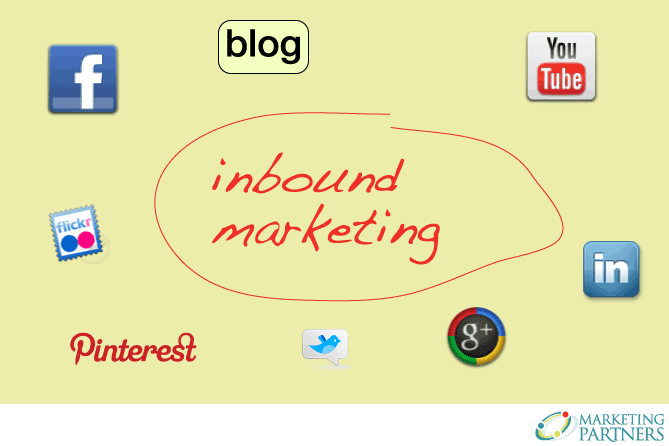 Last week I attended HubSpot’s INBOUND 2014 conference and training in Boston. (Boston was really enjoyable with perfect weather in mid-September.) HubSpot is a rapidly growing inbound marketing software company that provides software services to businesses, marketing agencies, and non-profits. While large conferences like this can be two parts pep-rally and one part party, the INBOUND conference is also jam-packed each day with keynotes and sessions presented by industry pundits and our peers. (Keynoters this year included Guy Kawasaki, Simon Sinek, Malcolm Gladwell, Martha Stewart, and Shiza Shahid.) I learned what many other agencies have done well, and some of their mistakes. In addition to the nitty-gritty technology specifics, there were broad themes, and I returned home with 5 takewaways from INBOUND 2014.
Last week I attended HubSpot’s INBOUND 2014 conference and training in Boston. (Boston was really enjoyable with perfect weather in mid-September.) HubSpot is a rapidly growing inbound marketing software company that provides software services to businesses, marketing agencies, and non-profits. While large conferences like this can be two parts pep-rally and one part party, the INBOUND conference is also jam-packed each day with keynotes and sessions presented by industry pundits and our peers. (Keynoters this year included Guy Kawasaki, Simon Sinek, Malcolm Gladwell, Martha Stewart, and Shiza Shahid.) I learned what many other agencies have done well, and some of their mistakes. In addition to the nitty-gritty technology specifics, there were broad themes, and I returned home with 5 takewaways from INBOUND 2014.
1. Growth of Inbound Marketing
A simplified definition of inbound marketing is “a methodology that focuses on creating quality content that pulls people toward your company and product.” It is an understatement to say that inbound marketing, which includes content marketing, is growing. The number of end-user organizations and marketing agencies attending this annual inbound marketing extravaganza nearly doubled from last year, with over 10,000 in attendance from around the world at the cavernous Boston Convention & Exhibition Center. The number of marketing agencies using the HubSpot software platform for their clients increased over 40% to 2,000 this year. There were many success stories, and few stories of failure to learn from presented at the conference.
2. Marketing, Not Advertising
Advertising is an ‘outbound’ tactic based on paying a media outlet to deliver your message and interrupt the audience in hopes they will respond and take some desired action (such as visit your website or buy your product). Inbound marketing is a focus on providing content — answers — to your prospects’ questions and progressively capturing more information about their needs so you can continue to deliver useful content, nurture a relationship, and eventually sell. You are probably doing some content marketing already with a blog or social media. But are you soliciting contact information and following up with more relevant information? For example, a professional service firm that gains a blog subscriber may want to offer a related white-paper. It is this integrated, educational and needs-focused approach that resonates with our values-based clients and can level the playing field in competitive markets. (It is also what led Marketing Partners to become a certified HubSpot agency partner to better serve our clients — and brought me to the INBOUND conference.)
3. Content is King
The most important part of inbound marketing (other than capturing leads and needs information) is providing useful content. You want your social media to be helpful, not sales oriented. Your blog posts should demonstrate knowledge and provide answers to prospect questions. A tire store might post a blog about all season and winter tires and how to determine the best fit for your driving. An attorney may write an article on collaborative divorce and whether it’s appropriate for your family situation. Each example answers likely questions from their potential clients. Then optimizing and sharing the story content expands the reach and number of prospects served in some way.
4. SEO is dead
SEO (Search Engine Optimization) has been a specialty and ongoing effort since the rise of Google and other search engines. And some SEO firms have tried shortcuts and hacks such as filling a page with keywords or creating false links to a web page to increase search engine rank and raise the position on search results. Meanwhile Google and other search engines refine their ranking algorithms to combat those practices and deliver better search results to users. And users are becoming better searchers by searching on multiple terms. The upshot is that optimizing for SEO – which is always changing – may do more harm than good. The better practice is to provide good content that provides answers to the searcher’s question. Focus first on message.
5. Bringing It All Together
Great content will bring people to your site, but you still need to capture and nurture leads, and follow up promptly on sales opportunities. You need to bring it all together – marketing and sales, outbound and inbound, product and service. There are many ways to do this, and HubSpot software is simply one tool among many that can help. However you proceed, think of your audience first — which means I may see you at INBOUND next year.


